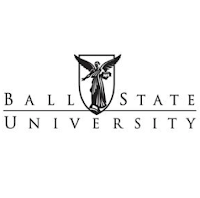Your name
|
Commented On
|
Stephanie Dean
|
Jessica MacNulty and Alex Stoltie
|
Literature Review
Introduction
Self-directed learning is a concept that has been researched and studied for many decades (Beard, 2010) and has been used by man since the very beginning as people had to learn how to adapt to the changes in the environment around them. Well-known historical figures from the beginning lacked access to formal education and had to educate themselves instead of attending school (Beard, 2010). Over time, understanding of adult learning and more specifically, self-directed learning, has increased.
Self-directed learning in the early 1900s became a hot topic when researchers and educators became interested to understand one’s learning capacity in adulthood. In the mid-1900s, learners were grouped together according to the reason for learning such as goal oriented, activity oriented, or learning oriented (Beard, 2010). In 1975, Malcolm Knowles published a world-renowned book called Self- directed Learning, which provided readers with definitions, assumptions, and guidelines outlining the importance of such learning. In the book, Knowles tells his audience that self- directed learning is “a process in which individuals take the initiative, with or without the help of others, in diagnosing their learning needs, formulating their learning goals, identifying human and material resources for learning, choosing and implementing appropriate learning strategies, and evaluating learning outcomes" (Knowles, 1975).
Theme 1- Personalization
Whether the context of self-directed learning occurs in education or in the workplace, self-directed learning has allowed learners to express themselves through creativity and relate what is learned to their own personal journey. Personalization allows learners to connect with the content they are interacting with in different ways and adapt to different learning environments according to Yapp and Freitas (2005). Each learner has unique needs that must be met, and the personalization of learning allows for that (Yapp and Freitas (2005).
Theme 2- Motivation & Goals
Learning is a process, and those who are capable of self-direction have matured and reached the point in their education where they are not only motivated to learn, but they are willing to guide the direction of what they are studying (Knowles, 1975). They see benefits in receiving feedback and constructive criticism. This might be so that they are able to apply the content to their lives and achieve personal and professional goals. According to Merriam, Caffarella and Baumgartner (2007), self- directed learning can lead to self-determination. Similarly, Kasworm believes that self- direction can be transformational and lead to lifelong learning, but this does not come naturally and is intentionally developed (2011).
Theme 3: Characteristics of Successful Learners
According to Knowles, not everyone will be a successful self-directed learner (1975). In his book Self Directed Learning, Knowles states just a few characteristics of self-directed learners such as being independent, willing and able to collaborate with peers and colleagues, planning thoroughly and working to achieve goals (1975). Critical thinking and problem-solving are also important pieces of self-directed learning and can directly affect how successful a learner is (Yapp and Freitas (2005).
Implications
Learners are constantly taking on more and more tasks and responsibilities in their educational and professional lives. An essential component of adult learning is self-directed learning, where the learner takes the initiative and responsibility of setting goals and identifying a need, taking in new content, and reflecting on the learning outcomes. In a sense, adults are making educational decisions for themselves. As the learner becomes more confident in themselves, they may choose to take on more responsibilities and make more decisions on their own. This type of learning can take place in an educational setting or a professional work environment. Below are a few ways that may help practice self-directed learning.
1. Personalizing and relating content to our own specific journey allows us to think deeper and make connections within the content. Identifying ways to apply topics to your personal and professional life can transform how you view yourself as a learner.
2. Utilizing feedback and criticism is a proactive way to develop, change, and push towards accomplishing goals. Because everyone has a different perspective, listening to others can help improve your understanding and help you build your stance on different topics.
3. Learning is a process that never ends, which gives us endless opportunities to learn. Finding a balance between working individually and collaboration can develop us as students, professionals, significant others, and friends.
Reflection
I really enjoyed reading about self-directed learning and took time after reading to think about all of the ways I use self-direction in my own life. I agree with Knowles that there is a process of maturing that needs to take place in order to learn from self-direction. Thinking back to high school and even a lot of my undergraduate studies, I relied heavily on instructors and professors to ask me questions and move me from one point in the course to the next. My graduate studies are quite different because I am taking classes remotely and I am taking complete responsibility for what I learn in a course. It requires me to initiate conversations, ask questions on my own, think critically about topics, and apply the content to the context of my life. A piece I read about self-directed learning that impacted me was the idea that not all learners will be successful self- directed learners. While I think the definition of success is relative to the person speaking about it, I believe generally there are measures taken by an individual that leads them to success. Personally, I needed the reminder that feedback is beneficial and encourages development, and I would like to be more open and accepting of constructive criticism. Finally, recognizing that learning is a never-ending process has impacted me personally and professionally. There are many stages in the process of learning, and no matter where someone is along that journey, there is always more learning to be done.



Comments
Post a Comment